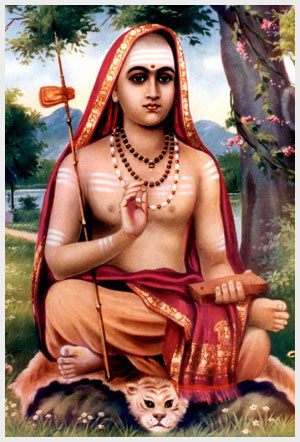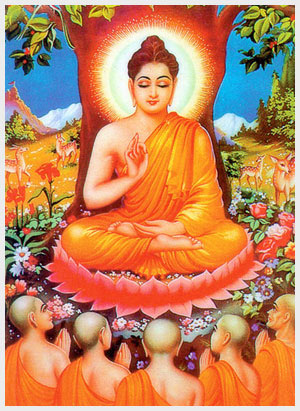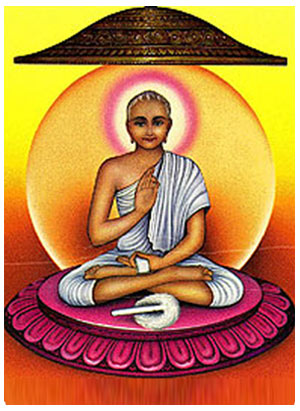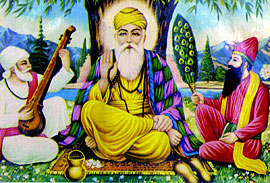
Common Features of all the major religions
Religion refers to any prevalent system of faith in Supreme Superhuman Power, the Divine Providence of the Universe, whom we call God. Faith indeed is the link between us and our Creator. The word “religion” is derived from “re-ligare” which means “being bound to”, i.e. “being bound back to one’s source”, which is God. Religion is man’s innate instinct and longing for God, his Creator, just as a child’s longing for its mother. The imperative need for God’s mercy and protection will be felt by man sometime or other in life. Man cannot and will not be able to remain agnostic for long. A child, lost in play, might forget its mother for a while, for a little or sometime, but sooner or later, either feeling thirsty, hungry or afraid of something, it will cry and run to its mother’s lap. The mother’s love is child’s assurance, its comfort and security. So also God’s mercy and love are man’s assurance, comfort and security. Need for God’s succour will be inescapably felt by man sometime or other, doubtlessly at least when he is helpless amidst the turmoils and blows of life. Sankaracharya sings, “O ignoramus! At the time of your death, when the Lord of death knocks at your door, none of your worldly acquisitions will ever come to your rescue, except Govinda. Therefore seek Him out, who is the only Succour and Saviour.”

How long can man stray away from God? Has not Lord Jesus told us the parable of the prodigal son? We have got to get back to the protecting care of our Father sooner or later. Our bond with God alone is the indissoluble bond; all the rest, all other relationships are mere make-believe, transitory and illusory.
We read in book, ‘Autobiography of A Yogi’ by Sri Yogananda Paramahamsa, one revelatory event. He lost his mother at a young age. He could have had some consolation had he been by her bed-side during her last moments. But he couldn’t be near her. He, along with his father, could reach Calcutta from Bareilly only after the event. The boy was inconsolable. Then he gets the vision of the Divine Mother Kali, consoling and comforting him. She was telling him, “It is I who have watched over thee, life after life, in the tenderness of many mothers9– see your mother in Me.”
Man is said to have been made in the image of God. But as Paradise Lost tells us , we have alienated ourselves away from the state of close relationship with God. Now we possess the “image of God” only potentially, but not in actuality. Unless we regenerate ourselves, unless we grow spiritually, we will not be able to regain “the Paradise we have lost.” The purpose of all religions is to endow us with the awareness of our real nature in God. At the level of the body and mind, the physique and temperament, the talents and tastes, we are profoundly unlike one another, but at the deepest level in us, at the level of the spirit which is the true ground of our being, we are all like one another. There subsists only one Divine Principle, call it God, Spirit or by whatever name one may choose to call it. But this Divine Spirit is dormant in us, veiled from our consciousness. All religions exhort that man has to grow into a regenerated being and let the Divine in him manifest itself. All religions want us to gain that inward spiritual revelation, whereby we will be able to see the truth of ‘Fatherhood of God and the brotherhood of man’, and the kinship of all beings and all existence. Then alone can there be true peace and harmony in the world amongst all the people. Then alone will we realise that “there is only one caste, the caste of humanity” and that “there is only one religion, the religion of love.”
All the religions in the world are different pathways, different approaches to God. The aim of all of them is to link up and restore affinity and rapport between ourselves and God. For this purpose, all religions prescribe disciplines which will help to restrain our passions, purify and refine our impulses and instincts, and direct the faculty of our reason on the Godward path and on paths beneficial to ourselves and to the society at large. The mind, which is the breeding ground for selfishness, desires, attachments and ambitions, has to be cleansed and properly oriented. To quote Baba, “The word used in the vernacular languages for religions is Matha and the word used for mind is Mathi. Putting these words together, it can be said that Matha is meant to straighten and strengthen the Mathi, the mind, and to illumine the intellect.”

Although the goal and purpose of all religions is the same, however, in the course of history of the human race, quite a number of religions have been born, each with its distinctive name. All the religions have been propounded by great souls who have had the highest spiritual experience; but, as per the geographical conditions and historical necessities and in the context of the particular times and also as necessitated by the cultural and psychological thinking of the people, each one of the founders gave his teachings and message in his own individual way, especially to suit the understanding of the people of those times. Thus, the founder of one religion might have laid emphasis in his preaching on a particular aspect/ aspects, and the founder of another religion on altogether different aspect/aspects. Thus the different religions looked at superficially may seem to be totally diverse and as even antagonistic to one another, especially taking into account the external ceremonies and the ritualistic practices. But a deeper study will unfailingly reveal that the undercurrent of all of them, the core of the teachings of all the religions, is but one and the same, and the purpose of all of them is to make man aware of the supremacy of the spirit over matter and to train him to transform his conduct in tune and harmony with the spiritual truths and reality. The different religious traditions only clothe this one Reality in various images and with distinctive doctrines, but the inner truth of all of them is the same. The different religions actually enrich and fertilize each other, making a spiritual fellow ship and giving mankind a many-sided perfection. The spiritual radiance of Hinduism, the faithful obedience of Judaism, the noble compassion of Buddhism, the vision of divine love of Christianity and the spirit of resignation to the Sovereign Lord of Islam- all these represent but different aspects of the inward spiritual life and of course, the varied projections on the intellectual plane of the ineffable experiences of the human spirit.
Hinduism, which is based on the ancient wisdom of the Vedas, emphasizes mainly the spiritual values and lays down that the realisation of Divinity within oneself and in all beings is the supreme goal of human life.

Zoroastrianism (1000 B.C.), one of the oldest religions like the Vedic religion of the Hindus, emphasizes on faith and light of spiritual wisdom more than most of the other religions. Jainism (800 B.C) and Buddhism (500 B.C) were born when the religion had degraded into mere rites and rituals, and, the sacrifice of innocent animals for the supposed purpose of appeasing Gods, with scant consideration for inner purity of religious life, became the scourge of the times. Buddha and Mahavira propounded a strict moral code of life, emphasizing on truth, love and non-violence as the supreme virtues and disciplines for religious life. Both were prompted by compassion towards all living beings and upheld Ahimsa as the supreme religious value and virtue.

Jesus Christ was born at the time when men were becoming too selfish and unconcerned for the plight of others. He preached high moral standards, love and more than anything else, service to the needy and relieving the suffering of others, as the religious virtues.
Similarly, Mohammed, the Prophet, was born (600 A.D.) in a society being ruined by rank materialism and bankruptcy of moral values. There was no true religious spirit in the people of those times. Islam, therefore, established a dynamic faith with a strict moral code and a spirit of total surrender to the Will of the Almighty God.
Sikhism, the youngest of all religions (1600 A.D) was founded by Guru Nanak when society was torn by clashes between Hindus and Muslims in many parts of India. Sikhism was an attempt to bring together the best from both Hinduism and Islam and to synthesis the two Faiths and to bring in harmony and understanding between the two religious communities. It discarded idolatry and the superstitions of the Hindus but accepted their spirit of tolerance for other religious faiths. At the same time, it avoided the rigidity of the Mohammadans but accepted the spirit of universal brotherhood of Islam.

There are about eleven major religions in the world today and they are classified as Aryan, Semetic or Mongolian.
Aryan
(i) Hinduism; (ii) Jainism; (iii) Buddhism; (iv) Zoroastrianism; and (v) Sikhism
Semetic
(i) Hebrewism (Judaism); (ii) Christianity; and (iii) Islam
Mongolian
(i) Taoism; (ii) Confucianism; and (iii) Shintoism
Common features of all Religions
On a closer examination, most of the so called differences amongst the religions are found to be linked up with prejudices and ignorance about other religions as well as one’s own. All religions basically advocate the supremacy of God and Man’s duty to Him and his own fellow beings. Externally also, they all have many common features and unity.
[/vc_column_text][/vc_column][/vc_row]